PLAY Introduction
Requirements are the ‘what’ of a project. What needs done to deliver the key outcomes for the initiative. If the team doesn’t know what needs to be done they won’t get behind the ‘why’, AKA the objective. This play will get the team aligned on what needs to happen to win the game!
PEOPLE
2-10 depending on the size of the team. If it becomes larger than 10 people consider breaking out into smaller groups.
TIME
30-60 Minutes. No one wants to be in a meeting longer than needed. Try to keep it short and sweet.
NINJA LEVEL
Practitioner to Master. It may take some practice to run this play.
PREP WORK
PLAYS
Prior to this play you will need to have a clear objective defined. Run the Project Kick-off play first if you haven’t already.
PEOPLE
The right people are key to the success of this play. Review the invite list to ensure that all the various experts are in the room.
PLACE
Virtually or in-person it is critical that everyone has face-time with each other. So make sure that if attending virtually that everyone can connect in video chat. You will also need to share ideas, so a whiteboard is important and a space that fosters creativity and innovation.
THE PLAY
All of our plays are five steps or less! However, you may need to run multiple plays to get the most out of this one. Don’t worry – you can do it! Learn the play, rehearse it regularly, apply it in the field and debrief on the outcomes. If it worked well, use it again; if it didn’t, find out why. Are there new factors in the system you need to consider, or do you just need to keep practicing? If you need help or have questions on this play, contact us!
01
SET THE STAGE
Who are the players?
Every winning team knows which players to have on the field and what talent you need on the ready. To successfully deploy this play you will need the following roster:
![]() Meeting Facilitator: Likely this is you! But you don’t have to do it alone, ask a friend (think of it like a football team that has a coach for different parts of the team). Skills needed:
Meeting Facilitator: Likely this is you! But you don’t have to do it alone, ask a friend (think of it like a football team that has a coach for different parts of the team). Skills needed:
- Keep the team focused on the goal!
- Foster a positive and creative space for all.
- Organized and prepared to run play.
![]() Project Manager: Project managers play the lead role in planning, executing, monitoring, controlling and closing projects. They are accountable for the entire project scope, project team, resources, and the success or failure of the project. Effective project managers need more than technical know-how. The role also requires a number of non-technical skills, and it is these softer skills that often determine whether a project manager — and the project — will be a success. Skills needed:
Project Manager: Project managers play the lead role in planning, executing, monitoring, controlling and closing projects. They are accountable for the entire project scope, project team, resources, and the success or failure of the project. Effective project managers need more than technical know-how. The role also requires a number of non-technical skills, and it is these softer skills that often determine whether a project manager — and the project — will be a success. Skills needed:
- Leadership
- Communication
- Scheduling
- Risk Management
- Cost Management
- Negotiating
- Critical Thinking
- Task Management
- Quality Management
- Sense of Humor
![]() Subject Matter Experts (SMEs): A SME (pronounced S-Mee) is critical for this play. They will help drive the team to a shared understanding of what is needed to win. Skills needed:
Subject Matter Experts (SMEs): A SME (pronounced S-Mee) is critical for this play. They will help drive the team to a shared understanding of what is needed to win. Skills needed:
- Specific domain knowledge, narrow and deep rather than broad and shallow.
- Communication and team collaboration. They must be able to share with others the knowledge they have on a particular subject.
![]() Product/System/Business Unit Owners: These are decision makers. They can make the call on what changes will happen or authorize a strategy. In some businesses they might be dual roles and also sponsor the project. Skills needed:
Product/System/Business Unit Owners: These are decision makers. They can make the call on what changes will happen or authorize a strategy. In some businesses they might be dual roles and also sponsor the project. Skills needed:
- Change agent. Supportive and enthusiastic about improvements.
- Supportive of the team and SMEs!
- Committed and engaged in the project all the way to the end.
Get the field ready!
![]() Schedule the meeting in advance. Don’t wait until the last minute to schedule the meeting. You want people to be excited about it but not so last minute that they have no time to prepare.
Schedule the meeting in advance. Don’t wait until the last minute to schedule the meeting. You want people to be excited about it but not so last minute that they have no time to prepare.
![]() Include an agenda. Set expectations – this will help keep your meeting on track. Include schedule and any prep work needed. Also let them know if it is okay to invite others or not. Remember that if you have to many people in the meeting, it will be difficult to facilitate brainstorming sessions without breaking out into smaller groups.
Include an agenda. Set expectations – this will help keep your meeting on track. Include schedule and any prep work needed. Also let them know if it is okay to invite others or not. Remember that if you have to many people in the meeting, it will be difficult to facilitate brainstorming sessions without breaking out into smaller groups.
![]() Prep the room. Arrive early and get ready. If it is in a physical room, get whiteboards ready, enough chairs for everyone, water and snacks are always a hit! If virtually, a central location for notes, brainstorms and follow-up items. Test connectivity in the meeting room and make sure there is enough seats for all participants.
Prep the room. Arrive early and get ready. If it is in a physical room, get whiteboards ready, enough chairs for everyone, water and snacks are always a hit! If virtually, a central location for notes, brainstorms and follow-up items. Test connectivity in the meeting room and make sure there is enough seats for all participants.
02
CORE ACTIVITIES
TEAM INTRODUCTION
Teams must be great at working together to win. Even if your team knows each other, it is important to spend time understanding how they will work together on this project. If this team is newly formed, you may want to run a couple of ice-breaker activities from step three to get conversation going.
- Start by introducing yourself, and your role on the team:
- Who you are in the organization and how long you have been in this role
- What specialty skills/knowledge you bring to the group
- Why you are interested in this project
- Move around the group and have each person introduce themselves answering the same three questions
- Record the team’s contact information and preferred method of contact (to save time this can be done ahead of the meeting)
UNDERSTAND THE END GOAL
Before you can define what is needed to win, the team must understand the goal.
- Write the objective statement (one sentence) in the middle of the whiteboard.
- Review with team to ensure that everyone understands what measures will define when the goal is met, this is also known as an acceptance criteria. If this isn’t immediately clear, consider running plays in step three.
WHAT DO YOU NEED
Now that the team understands what the objective is, it is time to define what you need to make sure the team is on the path to success. Often teams confuse ‘what’ with ‘how’. You can’t define how to build something until you know the need. This play is for understanding requirements, the ‘what’.
- Refer to the whiteboard and ask the team to shift thinking into the following statement, “In order to meet (objective), I need ________________ (what).“
- Pass large sticky notes to the team (space for 1-3 sentences) and have each person create 1-5 stickies filling in the blank to answer what is needed to meet objective. These should be high-level enough that all requirements are captured in 5 stickies or less for the person’s domain. It is helpful for like domains to have the same color stickies so they can be grouped.
- Ask team to place stickies on whiteboard around objective statement, grouping similar concepts together.
- Move around room asking each person to give a brief (5 minutes or less) overview of stickies on board.
DO IT AGAIN
The whiteboard should contain a bunch of consolidated high-level requirements now. Excellent work! However, this is just the first pass.
- Break out the team into smaller groups of similar domain expertise. If a SME is required in two groups, run sequentially in order rather than parallel so that the person can fully focus on one subject at a time.
- For each sticky note ask the team to shift to more detail thinking and ask, “In order to achieve this requirement, I need ______________ (what).“
- Pass standard sticky notes to the team (space for 1 sentence) and have each person create needed stickies. If the person says that nothing more is needed to achieve the requirement, then they have no more requirements to note, and should move on to the next larger requirement.
ONE LAST TIME
Some requirements will still need to be further decomposed until they are at the appropriate level of detail. Beware of analysis-paralysis. Getting stuck in trying to figure out every detail will stall even the best projects. Allow for some flexibility but aim for that known requirements are well communicated and bite-size.
- Mark any standard sized sticky note that needs further detailed requirements and have smaller groups regroup based on domain expertise.
- Determine if requirement should be split into separate notes. Each requirement should be able to be delivered on it’s own without need of other requirements.
- For each marked standard sticky note ask the team to shift to final detailed thinking and ask, “In order to achieve this requirement, what is the final thing I need? It is ______________ (what).“
- Pass small sticky notes to the team (space for 1-5 words) and have any last requirements noted. There is no further sub-levels requirements so this must list final needs.
Want to learn more? Check out How to Write Better Requirements from TestLodge
03
 TEAM HUDDLE
TEAM HUDDLE
Time to run the Team Huddle play. Ask the team the following questions and then take a vote. Keep follow-up questions to a minimum and capture any issues raised as an offline follow-up (and be sure to follow-up).
Understand the play?
![]() The play was understood and I asked any questions in time!
The play was understood and I asked any questions in time!
![]() I’m not sure I understand and I have some questions …
I’m not sure I understand and I have some questions …
![]() I did not understand the play or my part in it.
I did not understand the play or my part in it.
Did you get in the game?
![]() Yes, I made my moves and was in the right place at the right time!
Yes, I made my moves and was in the right place at the right time!
![]() I’m not sure I understand what I was supposed to do …
I’m not sure I understand what I was supposed to do …
![]() I kept the bench warm and watched from the sidelines.
I kept the bench warm and watched from the sidelines.
Ready for what’s next?
![]() Yes, I know the game plan and ready to win!
Yes, I know the game plan and ready to win!
![]() I’m not sure what’s next or if I am involved …
I’m not sure what’s next or if I am involved …
![]() No clue what’s next and would rather sit it out.
No clue what’s next and would rather sit it out.
04
NEXT STEPS
Phew! The hard part is done! You might be tempted to go further and discuss what are the solutions (the how) – but don’t! Instead congratulate the team on a very successful and productive meeting!

![]() If needed, schedule another meeting. For large projects you may need to repeat this meeting several times to identify all requirements. Don’t worry, once the team gets the hang of it, the next meeting(s) will go much faster and smoother.
If needed, schedule another meeting. For large projects you may need to repeat this meeting several times to identify all requirements. Don’t worry, once the team gets the hang of it, the next meeting(s) will go much faster and smoother.
![]() Publish your list of requirements in a central repository that the team has access to immediately. Even better if it is someplace that the team can add comments or collaborate on. Keep the creative chat going!
Publish your list of requirements in a central repository that the team has access to immediately. Even better if it is someplace that the team can add comments or collaborate on. Keep the creative chat going!
The sticky note format lends itself easily to an outline form that can be transferred to most any project management tool (MS Project, Excel, Word) or a work collaboration tool for Agile development (Jira, Confluence, Wrike, Smartsheets, Workfront, Asana, Basecamp).
For those working in an Agile tool, the conversion of sticky notes is as follows:
- Large Sticky Note => Epic
- Standard Sticky Note => Story
- Small Sticky Note => Sub-task (Beware of creating these at this point, better to note in story ticket as these will likely change during grooming)
- Standard Sticky Note => Story
05
IT’S A WRAP
You did it! Now just a few follow-up items:
- Reflect on the play. Ask yourself how it went? What could have gone better, what could have gone worse? In sports this is watching the game again to see any plays that could have been better. Update your playbook. Build feedback loops that help you see what’s working; what’s not; and how to continue to develop the playbook by learning, adapting and iterating constantly as situations change and new challenges arise.
- Contribute to the community of Playbook.Ninja. Sign-up for an account and receive updates on when new plays are added and help others by commenting on the plays with what worked or your experience.
Thank you for being a Playbook.Ninja
![]()

 TEAM HUDDLE
TEAM HUDDLE